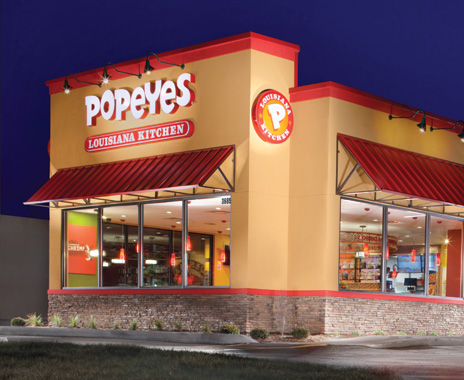The world of franchising has long succeeded by giving regular people the chance at achieving the American dream and owning their own business. But while franchising can lead to small-scale, mom-and-pop success, it can also lead to widespread, long-term success for those franchisees that strategically diversify their portfolio with multiple brands.
Take, for example, Atlanta-based GPS Hospitality, which got its start in 2012 when a group of former Arby’s employees purchased 42 restaurants from Burger King corporate. The franchisee, which now numbers more than 200 Burger King stores, recently opened seven Popeyes Louisiana Kitchen units as a way to spice up its portfolio, says Scott Jasinski, CFO of GPS Hospitality.
“It provides the same upside potential and downside protection that any individual investor has with a diversified portfolio,” Jasinski says. “From a return-on-investment standpoint, a company can maintain much more consistent results … when you have [multiple] brands.”
Although a diversified portfolio can strengthen a company, franchisees must weigh the initial and ongoing costs against the revenue potential. Capital investment, operational strategies, site location, and financial models vary from brand to brand.
“It’s not easy. … It’s harder than being a single franchisee,” says Clyde Gilfillan, a North Carolina–based consultant with more than 25 years of experience in the foodservice industry. Veteran franchisees are better suited to take on a multi-brand portfolio, he says, because they’re more in tune with the nuts and bolts required to run the business.
Even with a strong support infrastructure in place at the corporate level, GPS had to deal with the operational differences that existed between burgers and chicken when it diversified to multiple brands. To address that learning curve, GPS hired a director-level individual with experience in quick-service chicken nine months before the company’s franchise application was even approved by Popeyes.
Gilfillan says franchisees who explore adding brands to their portfolio do so because they’ve run out of areas to develop more sites, or the franchisor has decided against more growth in their area. For GPS, bringing Popeyes into the fold helped the company expand without leaving the greater Atlanta area.
“It gave us more flexibility to grow,” Jasinski says. “We are all about growth … so when we got to that 200-store mark with Burger King, it was getting harder and harder to grow in that brand. We knew that if we were to continue at the pace we were going, we had to get into a different brand.”
Another motivating factor behind franchisees expanding their brand repertoire is a desire to expand their operating model. Others go multi-brand to offset fluctuations in the commodities markets, Gilfillan says, and still others diversify to counteract a seasonal business.
Jubilee Restaurant Group, a franchisee with 10 Five Guys stores in the South, recently became a multi-brand portfolio with the agreement to develop 13 Uncle Maddio’s Pizza units.
Jubilee president Seth Hargett says his firm became a multi-brand operator to take advantage of the benefits of diversifying the age of their brands and the type of food offered. The investment payoff can be great if the new brand catches on with diners, Hargett says. For a young concept like Uncle Maddio’s, however, the return on investment depends greatly on the development of brand recognition, which can add to the cost of operating brand-new sites.
“As far as these upstart brands, it is all about location and how the brand controls its growth,” he says.
Multi-brand franchisees are somewhat more attractive to larger franchisees and investors who may want to purchase the business, should that be in the long-term plans for the operator, Gilfillan says.
Building a multi-brand franchisee business also can significantly reduce the negative financial impact that may occur when questions about quality or food safety arise with a chain. For example, diversification could help a company if one of its concepts experiences a sharp decline in sales due to consumer trends, a food-safety issue, or other factors.
“Therein lies the dilemma [in terms] of betting on the right brand in your portfolio,” Hargett says.
The return on investment and margins depend greatly on the financial structure of the franchisee, as well as the business model of the brand, Gilfillan says, adding that a large franchisee will experience more gains in economies of scale compared with a small franchisee.
Would-be multi-brand operators should also look at the hurdle rate—the minimum acceptable rate of return on a project—to ensure it will be profitable. For instance, investments in safe municipal bonds can earn 5 percent a year, so franchisees should require a similar ROI when bringing a new concept into the fold.
At the same time, franchisees can benefit from having multiple brands because it saves when it comes to training, as those systems are already in place. On the flip side, a well-structured and experienced operator incurs less cost in taking on a new brand compared with a new franchisee, given that knowledgeable support personnel are already in place.
"Our IT director does IT for both Burger King and Popeyes, and we use the same accounting system,” Jasinski says. “It doesn’t matter to the comptroller or the staff accountant whether they are supporting a Burger King or a Popeyes.”












